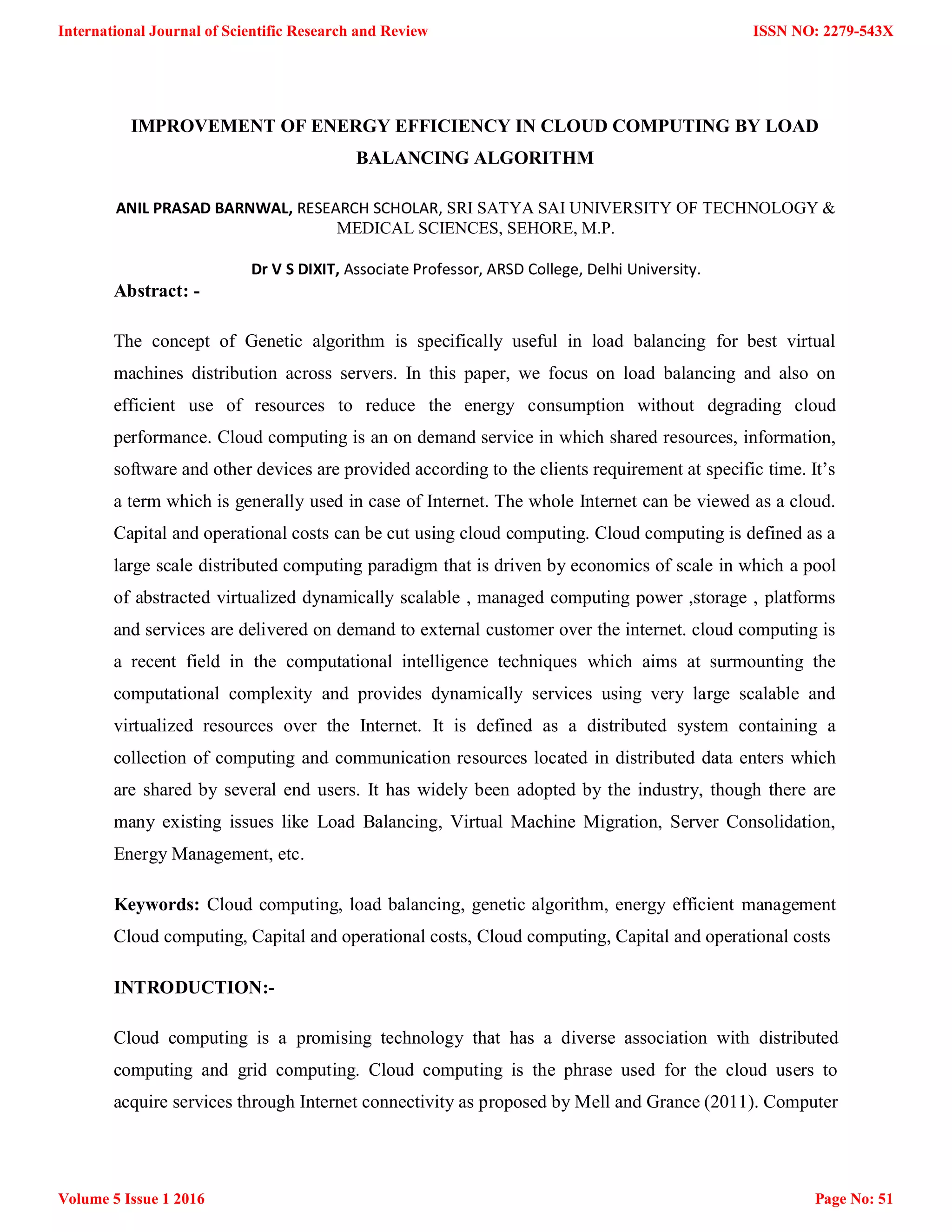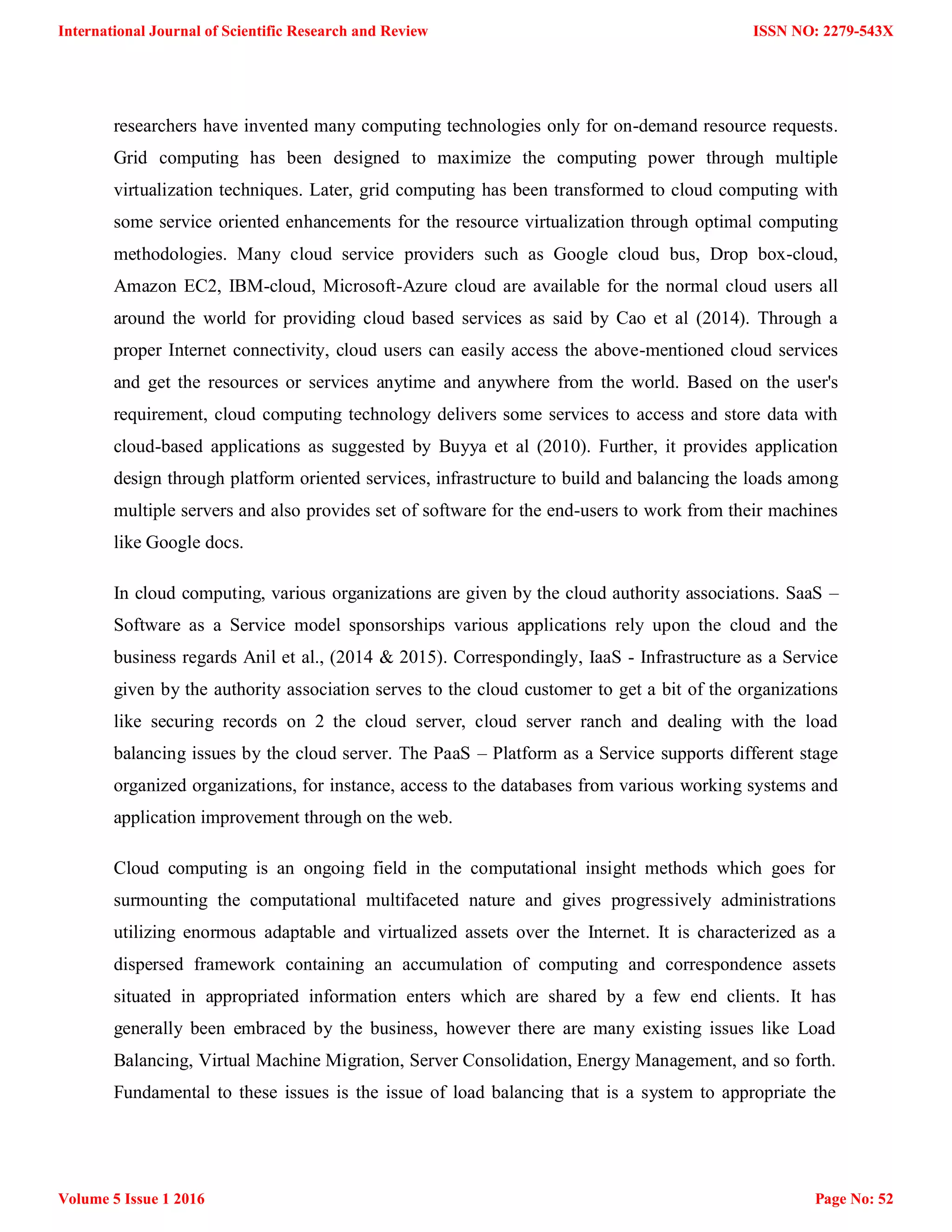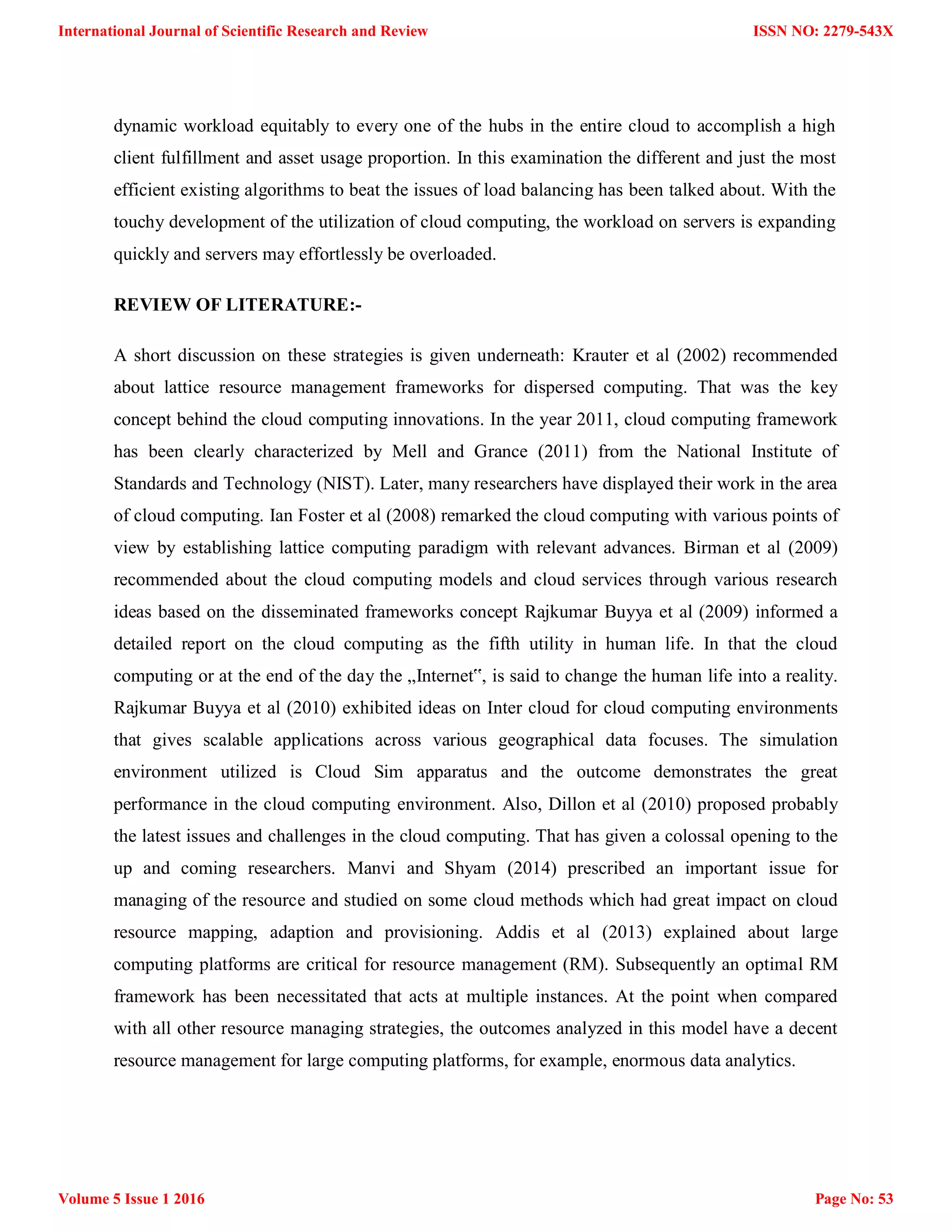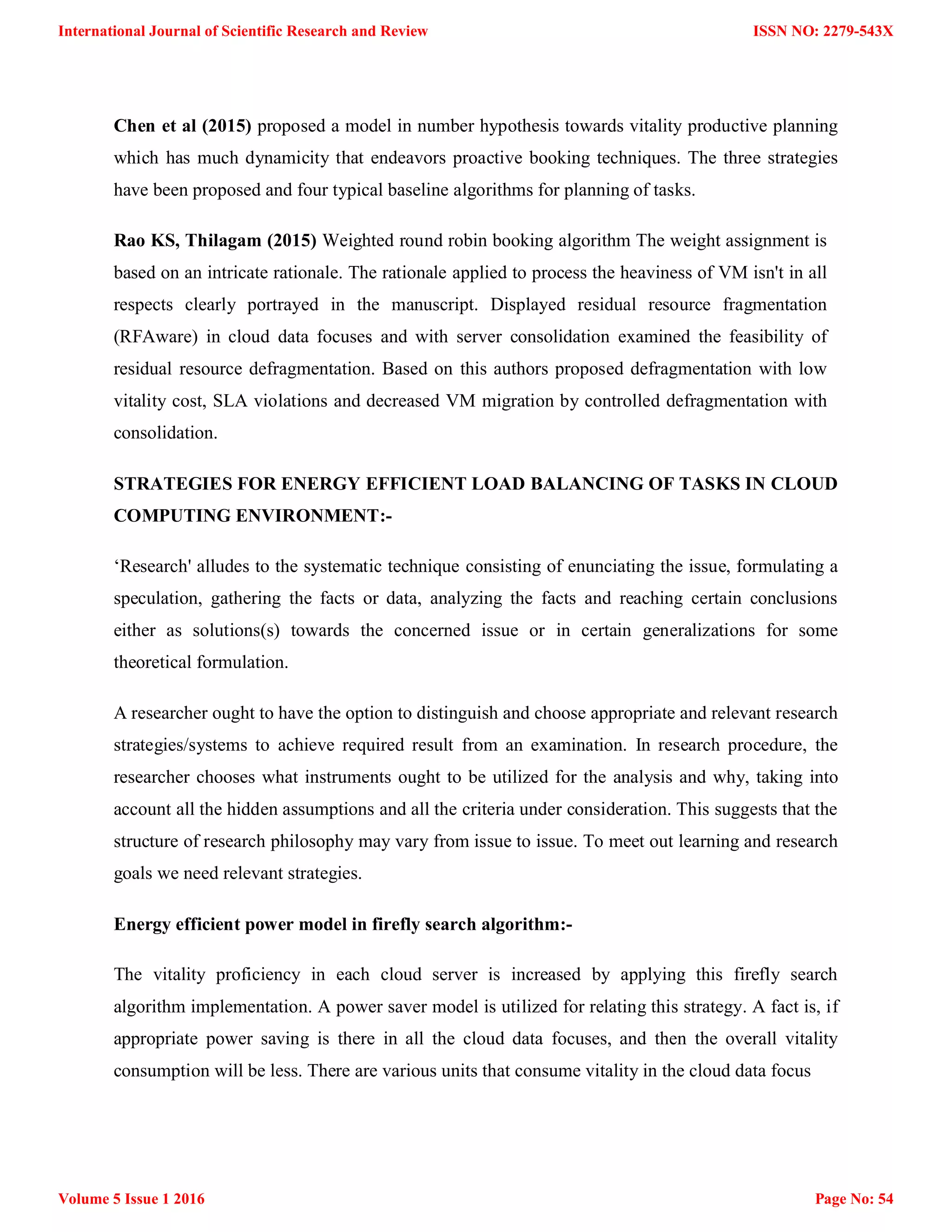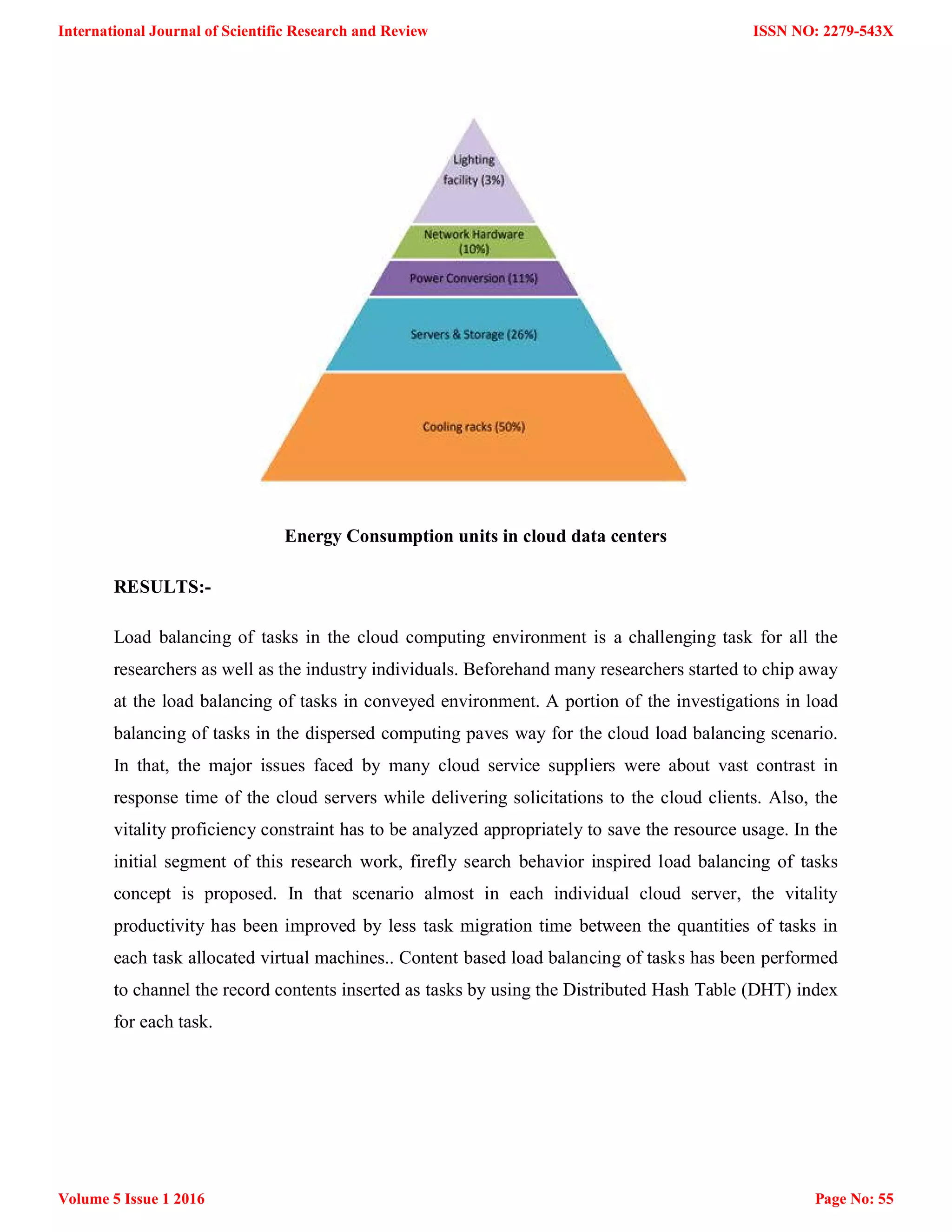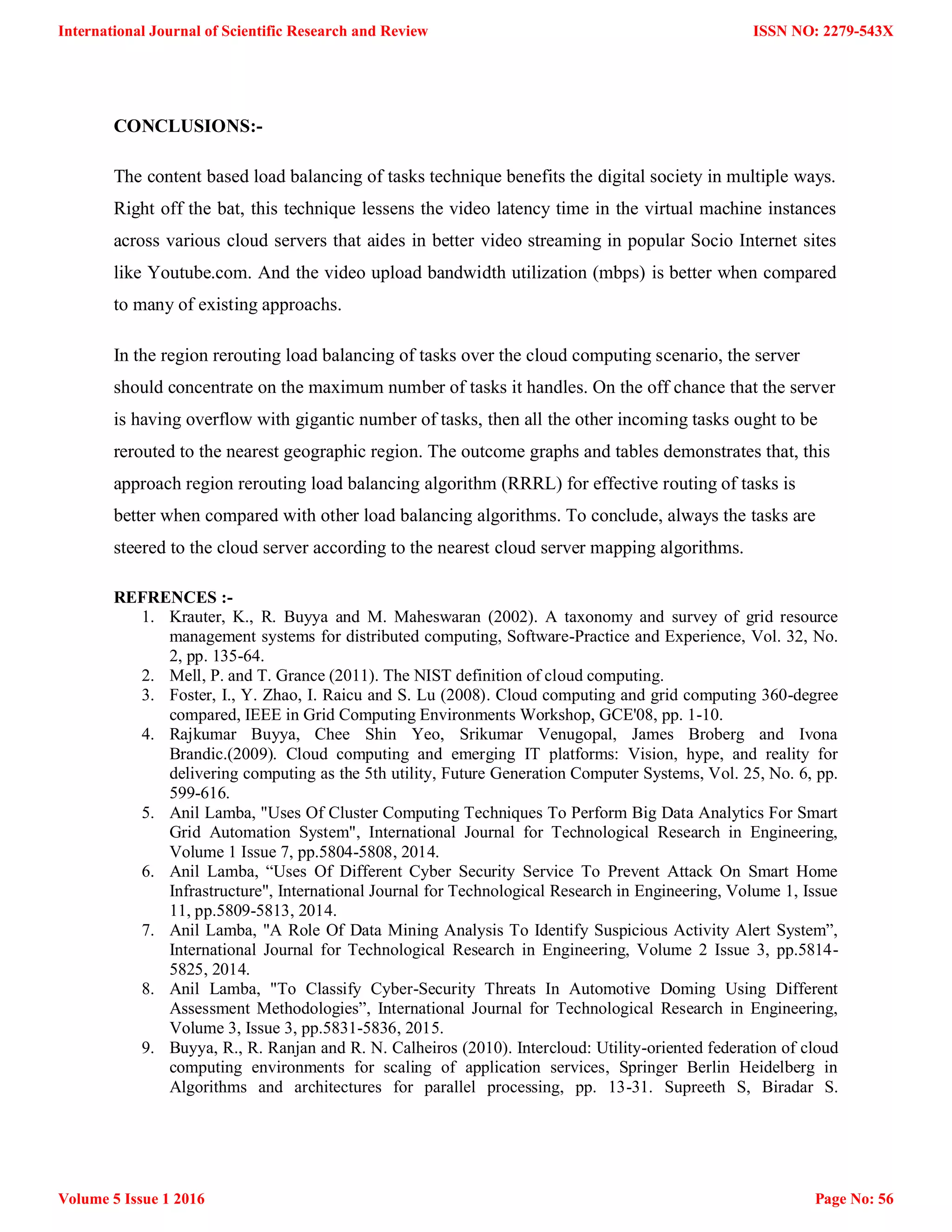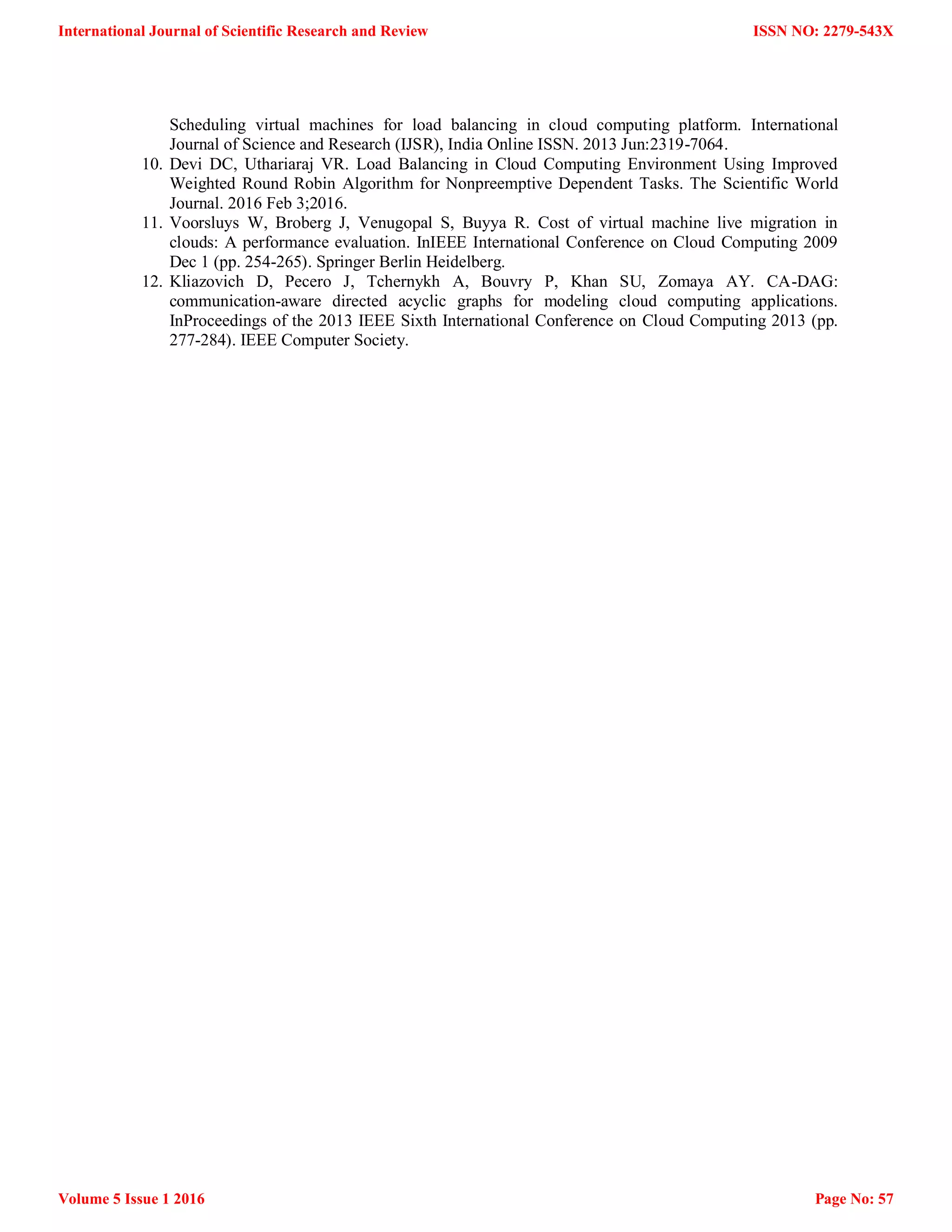This document discusses the improvement of energy efficiency in cloud computing through a load balancing algorithm, highlighting the significance of genetic algorithms in distributing workloads across servers. It emphasizes the importance of resource efficiency to minimize energy consumption without compromising cloud performance, addressing prevalent challenges like load balancing and virtual machine migration. The proposed research includes a firefly search algorithm to enhance energy efficiency in cloud servers, concluding that effective routing of tasks can lead to significant performance improvements.
